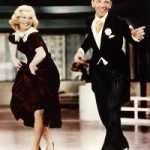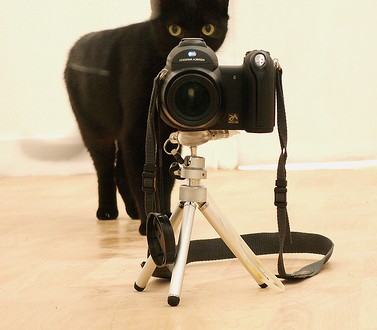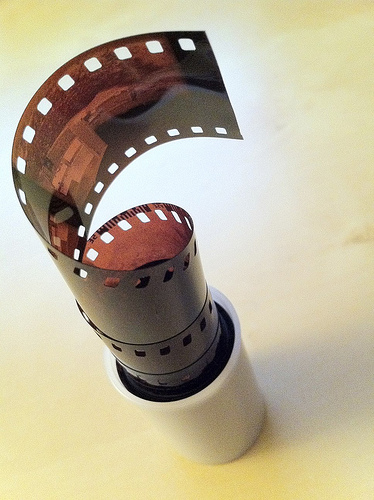Using Camera Technique for Big Impact
This week we’re going to continue the topic of wearing different hats as authors. Two that can really help when writing a novel are a director’s hat and a film editor’s hat. In an earlier post I mentioned how important it is to keep in mind how scenes are constructed, and how they need to have a point to them. We want each scene to serve a purpose—either to reveal a key plot point or reveal character. The aim, then, for the writer—whether novelist or screenwriter—is to build to that important moment. And the most powerful way to do this is by utilizing specific camera shots to get there.
Don’t Be Boring
Most authors use the same angle in every scene, and that can be boring. What do I mean by “the same angle”? I mean that if there was a camera filming what was taking place in the scene, it would be set up in one spot and never move. It would never zoom in, pan, pull back, or follow anyone. Is that bad? Not necessarily. You may have a scene that is solely in a character’s head—just her thinking. And maybe that’s a powerful scene because of the character insights and plot points revealed.
But would you enjoy reading a book in which most of the scenes were like that? Probably not. In fact, if you read a few pages of explanation and internal thinking and nothing was happening (read: no real-time playing out of a scene you can visualize), you just might throw the book down and go get a bowl of ice cream to soothe your battered soul.
It’s Just Not Happening
Haven’t you read scenes where two people are sitting somewhere (and you’ve probably not been told where) and just talking? The dialog goes on for pages, and maybe some of it is interesting, but you can’t picture where these people are, what the setting is like, what they look like. Or maybe you have more description than you want—of the restaurant and their clothes and hair and the noise and smells inside. But still—nothing happens.
I’m not talking about physical action. And this is an important distinction. There can be a lot happening in a scene without a character even twitching. There can be heavy subtext, innuendo, clues, suspicions—all kinds of tension and plot reveals going on. But still, the scene can feel flat and a bit boring because it feels like the camera filming all this is stuck in one spot across the room.
This is not to say every scene needs to have your “camera” zooming and panning and doing gymnastics to keep your reader’s interest up. But once you see how you can bring in a variety of camera shots to your scenes—even the ones in which not much is happening—you will realize there are better ways to construct them to supercharge them. Don’t settle for okay or boring or so-so. Think big impact. That’s what great directors do.
And big impact doesn’t apply to just explosive scenes with high action. You can have a huge-impact small moment. A tiny element in your story can be key—the gripping pivot upon which your entire plot hinges—and by using the right camera shots, you can play up that subtle bit and blow it up to the size it should be. High-impact moments, regardless of how subtle, should “fill the entire screen.” And I’ll show you how it can be done.
The Art of Film Editing
 Have you ever watched old black-and-white movies? I’m thinking in particular of those great Fred Astaire musicals full of amazing dance routines. Sometime, go watch a few and pay attention to the camera shot. Back in the day, film editing was kept to a minimum. It was expensive, tedious work. Film editors had to literally cut and splice pieces of film together, which was tricky to do seamlessly. Because of this, most of those great dance numbers are one long shot from one camera, without interruptions, without slicing and dicing. Not like what’s done today. It makes me wonders how many takes Fred and Ginger had to do to get one good keeper shot. I get tired just thinking about all those fast, nifty steps.
Have you ever watched old black-and-white movies? I’m thinking in particular of those great Fred Astaire musicals full of amazing dance routines. Sometime, go watch a few and pay attention to the camera shot. Back in the day, film editing was kept to a minimum. It was expensive, tedious work. Film editors had to literally cut and splice pieces of film together, which was tricky to do seamlessly. Because of this, most of those great dance numbers are one long shot from one camera, without interruptions, without slicing and dicing. Not like what’s done today. It makes me wonders how many takes Fred and Ginger had to do to get one good keeper shot. I get tired just thinking about all those fast, nifty steps.
Today editing is a highly praised art form, and with the current tech is much easier and versatile. A film editor must creatively work with the layers of images, story, dialogue, music, pacing, as well as the actors’ performances to effectively “re-imagine” and even rewrite the film to craft a cohesive whole. Editors usually play a dynamic role in the making of a film. Walter Murch once said, “Film editing is now something almost everyone can do at a simple level and enjoy it, but to take it to a higher level requires the same dedication and persistence that any art form does.”
The editing in film often goes unnoticed. However, if one does not notice the editing, then it is doing its job. The editor works on the subconscious of the viewer, and if you think about it, writers do the same when they write a novel. Editors are awarded Academy Awards, and maybe you’ve wondered why, but I don’t. And I think you won’t either, once we delve more into the fine art of film editing.
This week, watch an old black-and-white movie and pay close attention to how the scenes are shot. See how many are done in one cut, with the camera in just one place, without any editing. Then, as you watch a modern movie, do the same. See how many segments of film from various angles are pieced together. maybe even tally them on a notepad. Look at a scene you are currently writing or have recently written and try to envision filming the scene, then note how many different angles you are showing to reveal the story line. Keep this in mind as you learn how to deliberately use the “camera” to shoot your scenes throughout the year.







Susanne, what a great way to make us writers describe in graphic terms. I will be looking at my writing with just a different eye now, a camera person’s eye. Shouldn’t be that much of a stretch as I love to photograph wherever I am. Well done!
Susanne –
Your comments are right on. As an avid photographer, and former ad agency art director, I learned a long time ago the importance of setting the scene properly, and making sure all the elements worked together to focus on the whole. “Leading the eye” it was called.
As a writer, I understand the importance of both scene and dialogue as elements of composition. You could think of it as leading the reader … but to be done properly the reader should never be aware of being led.
Your post hits the mark perfectly. Thanks.
Thanks so much for the camera technique posts. As a one-time reporter I find the old journalism school list (who, what, where, when, how, why) useful in planning my scene “shots.” Happy writing.
I would love for you to read my novel. This is the exact technique I used when I wrote it (as well as all my writing) and I don’t think I could write without it. Even as a musician when I write I’m very “visual” and see the scenes playing out in my mind.
Susanne, I’m so glad that I was directed to your site and subscribe to your website, I’m in the midst of editing, re-editing a work that I thought was ready for publication. Your directions have opened my eyes to looking at each scene with differently and with a camera’s angle view and not just set on a scene. I’m looking forward to your next edition. Augie
Thanks so much! We will be covering a lot in this course so stay tuned!
I so enjoy reading your blog. I thought I’d chime in with a clarification about Fred Astaire. He insisted that directors film his dances in once shot to showcase the structure of the dance. Although you certainly have a point that film shots were less varied during that era. Look forward to more of your sage advice.